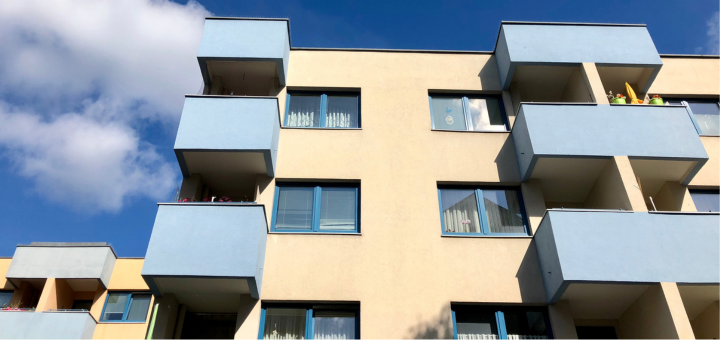The Living in Australia 2024: National Community Views Survey - Key Insights Report (DOWNLOAD HERE) draws on the views of the more than 5,000 people who participated in .id’s annual Living in Australia Community Views Survey collected across April and May 2024, and speaks to four themes we feel are critical to improving living standards across the nation.
The issue of affordable and decent housing in Australia is a topic that resonates deeply across our society. While few would dispute its critical role in our national prosperity, the way we tackle housing challenges remains contentious. Housing is not just a roof over our heads; it serves as both an enabler and a barrier, shaping the lives of individuals and families for generations.
The Rising Cost of Housing
In recent years, the landscape of housing affordability in Australia has shifted dramatically. Back in 1984, when the Baby Boomer generation began entering the housing market, the average property price in capital cities was approximately three times the average annual full-time earnings. Over the four decades since then, house prices have growth three times faster than wages. In addition to this, the cost of private rental accommodation has also surged, leaving many Australians struggling to find suitable housing.
The high demand for housing is compounded by Australia’s rapid population growth. As one of the fastest-growing countries in the OECD, our population is projected to reach around 35 million by 2046, increasing by approximately 330,000 people each year. With shrinking household sizes and escalating demand, the pressure on housing supply is immense.
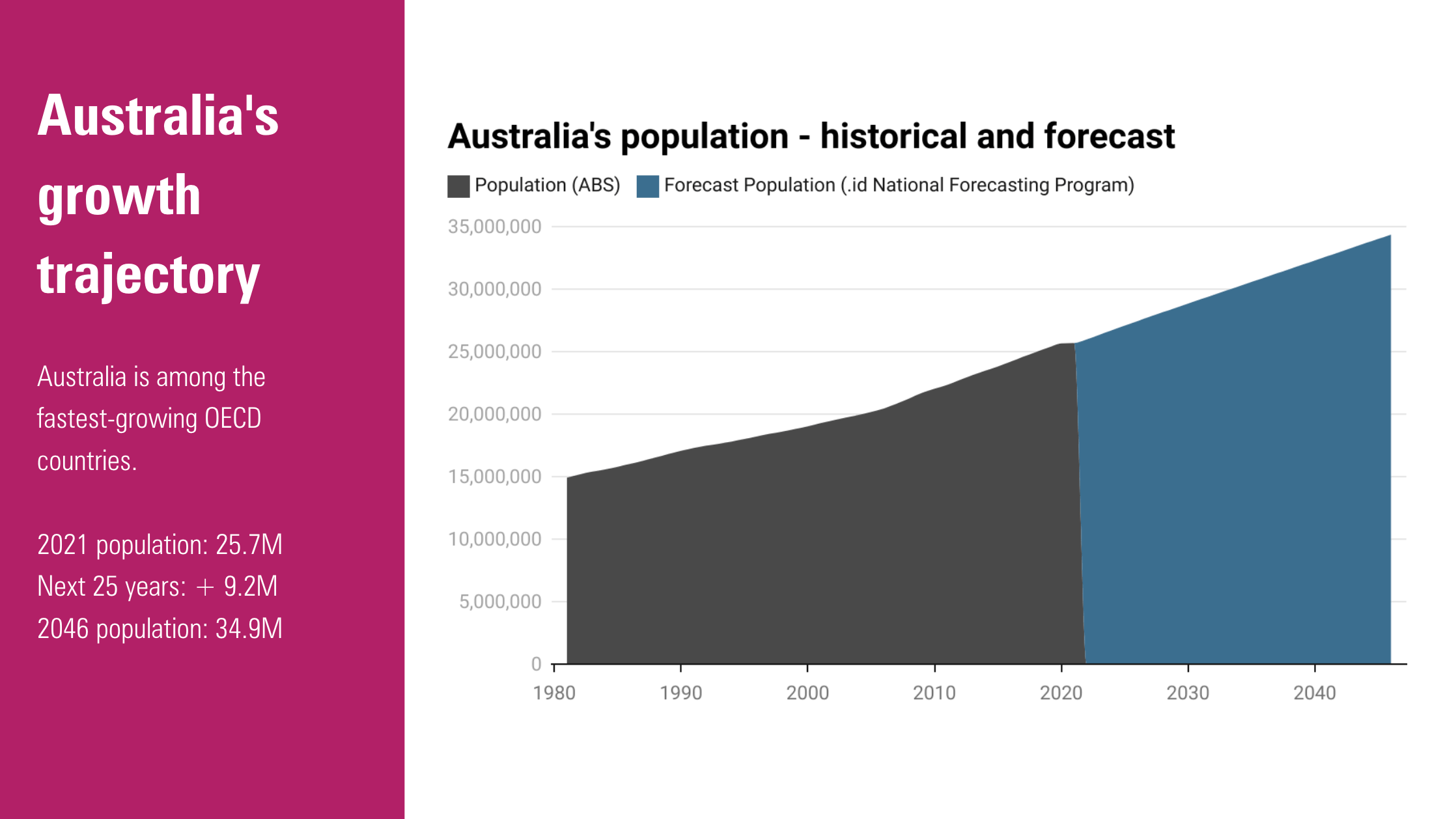
The Importance of Affordable Housing to the Community
According to our Living in Australia survey, affordable decent housing is ranked as the third most important attribute of liveability across the nation, with 52% of respondents placing it in their top five priorities for a good place to live. This figure has notably risen from 46% in 2023, highlighting an increasing recognition in the general public of the critical need for affordable housing.
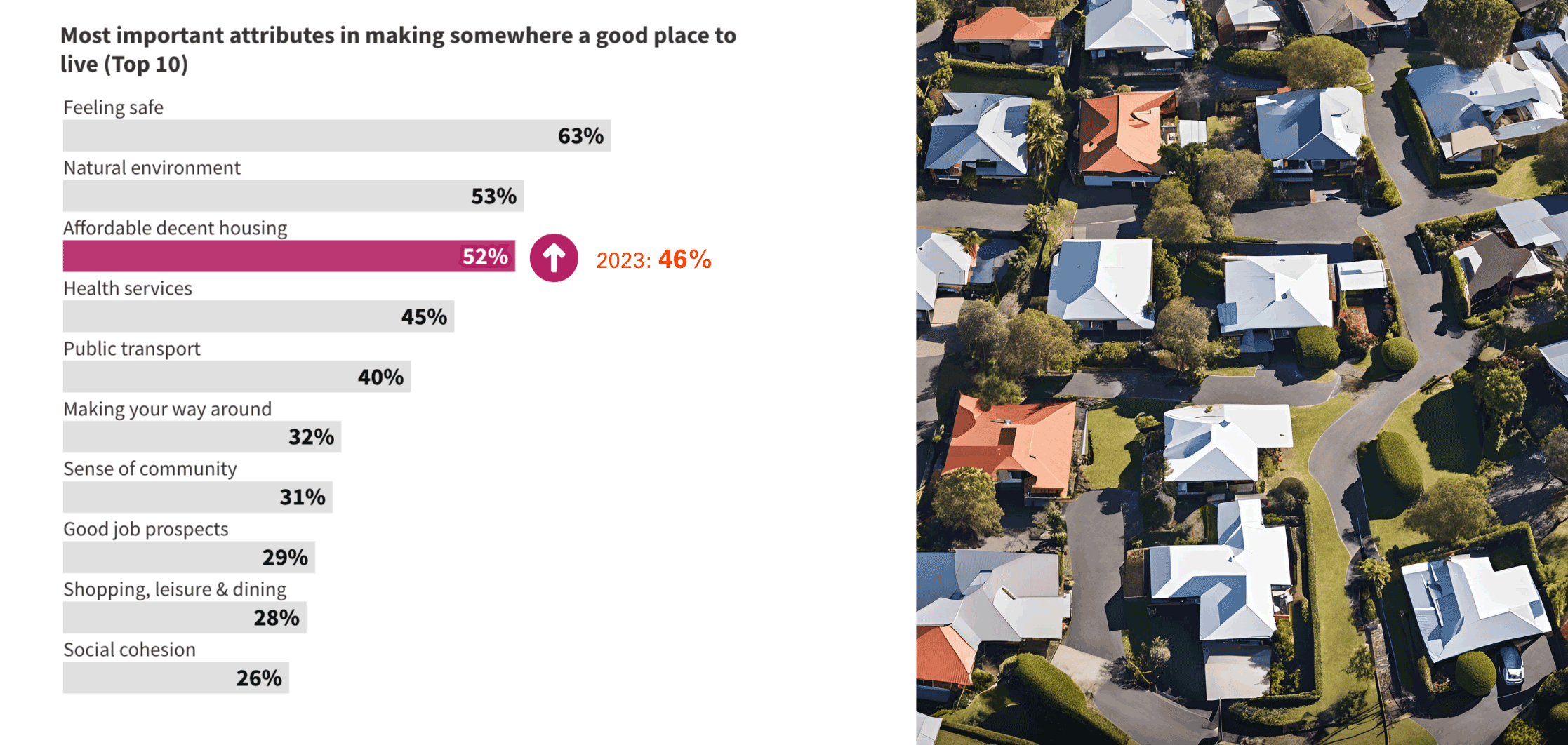
However, there is a stark contrast between this value and the lived experiences of Australians. When it comes to the actual availability of affordable housing, respondents rated their experiences at a disheartening 4.7 out of 10, ranking it as the 16th most positively experienced attribute.
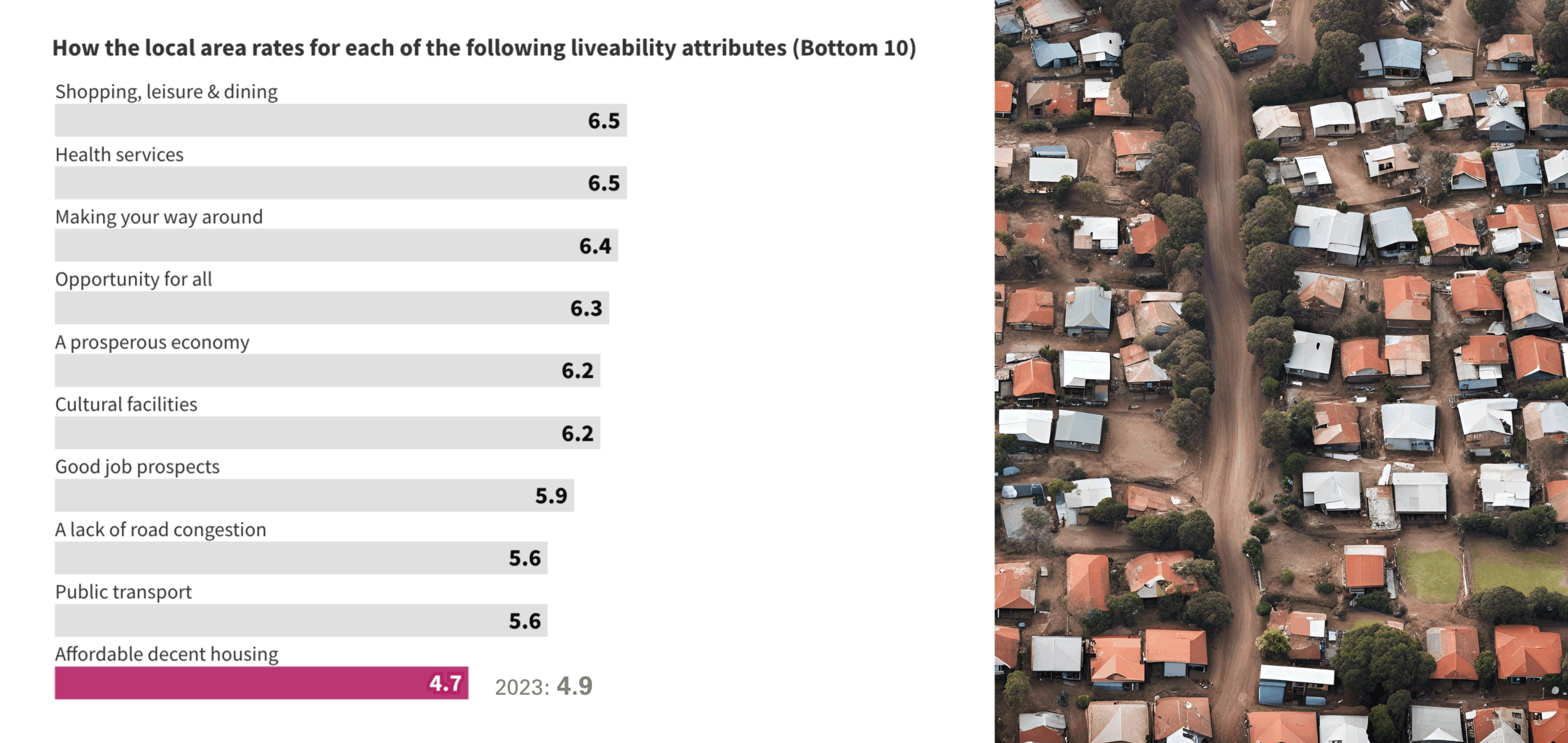
This gap underscores the pressing need to bridge the divide between what people value and what they can access.
Regional Differences in Perceptions
Experiences of affordable housing vary significantly across Australia. In metropolitan areas, experiences improve the further one moves from the CBD, with inner-city experiences rated as low as 4.2 out of 10, while outer suburbs fare slightly better at 5.0 out of 10. The regional picture is complex, with poorer experiences of affordable decent housing in regional towns, particularly in Southern and Northern NSW. These places experienced an influx of new residents during the pandemic, placing pressure on house prices.
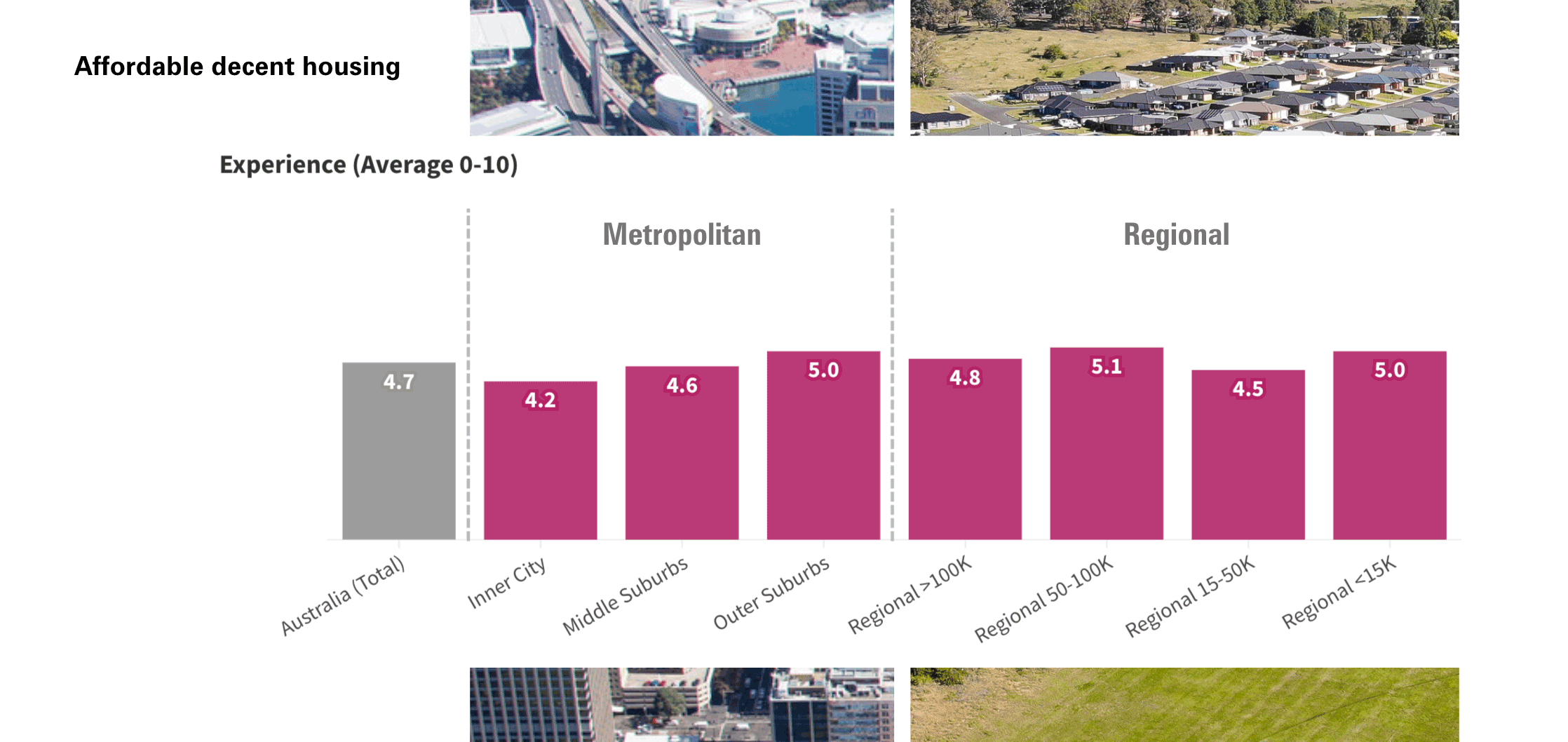
Our analysis reveals that individuals who perceive poorer access to affordable housing are more likely to feel that their local area lacks ‘opportunities for all’ (rating their area an average of 5.3 compared to 6.3 on average). This perception can lead to feelings of inequity, diminishing trust in local governance, and ultimately impacting mental health and social well-being.

The Role of Local Government
Working with local governments across Australia, we’ve observed that each area has a unique housing narrative, often informed by the demographics and the role of the place.
For example, in Banyule City Council (in Melbourne’s north-eastern suburbs) there is a high proportion of residents who own their own home outright – 36% compared to the national average of 30%. This is an established area, with an older median age of 40 years. Across Banyule, ‘affordable decent housing’ was selected as the 10th most important liveability aspect in 2023, with only 27% of residents naming it in their top 5. In Banyule, residents are typically more focused on other aspects such as transport and roads and shopping, leisure and dining experiences.

In contrast, the City of Ipswich in South East Queensland, there is a lower proportion of people that own their own home (19%) and a relatively high proportion of renters (38%), and households with a mortgage (36%). Ipswich is a rapidly growing area one of the attractions of this area is its affordability. Here, ‘affordable decent housing’ was the 2nd most important aspect of liveability in 2023, with one in two residents (50%) finding it important to their quality of life. In addition, changes in the macro housing environment (like increasing interest rates, housing and rental prices) are more likely to affect this community in comparison to other parts of the nation.
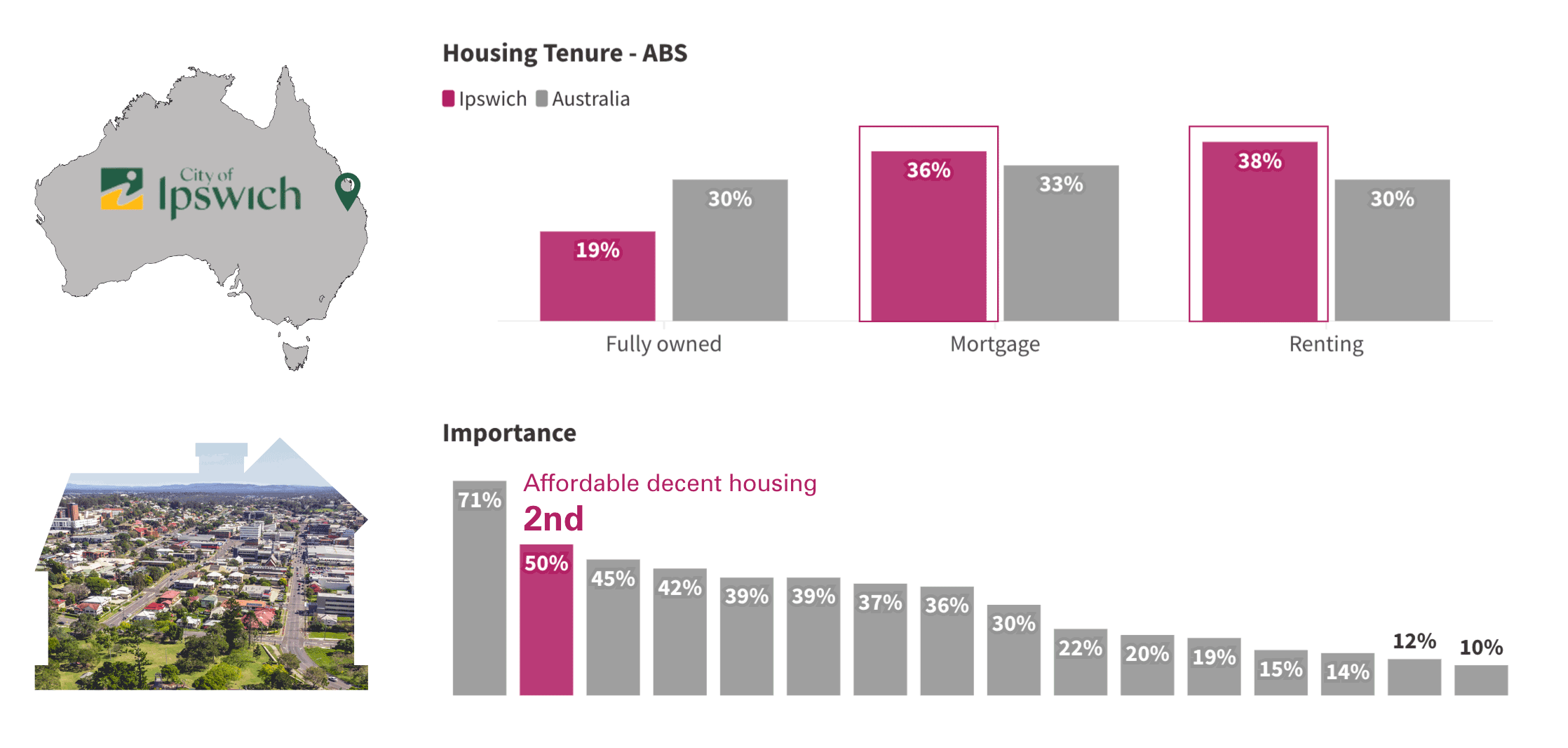
What this means for governments and industry in Australia
The provision of affordable decent housing stands as the single most significant barrier to improving quality of life for many Australians. It is essential that we advocate for solutions that bridge the gap between values and experiences in housing. As we continue to navigate this complex landscape, it’s crucial for all stakeholders - government, community organisations, and individuals - to work together to ensure that affordable housing becomes a reality for everyone, enabling all Australians to thrive.
If you’d like to learn more about how the Community Views Service helps a diverse and growing number of councils and other organisations credibly, comprehensively and efficiently represent and monitor their community’s views and needs in strategic planning and advocacy, our services page provides a simple overview, answers frequently asked questions and includes links to other helpful information.
Resources
Learn more about .id's Community Views Service, contact the team or book a free service overview.
Download the Living in Australia: 2024 National Liveability Survey report.
Explore our Living in Australia National Liveability survey results on the views.id platform HERE.
See how Councils are using Community Views insights and data to represent resident priorities in decision making: Ipswich City Council, Banyule City Council, Sunshine Coast Regional Council and City of Canning.
Learn more about our Housing Monitor Service | housing.id and explore local area data at housing.com.au









